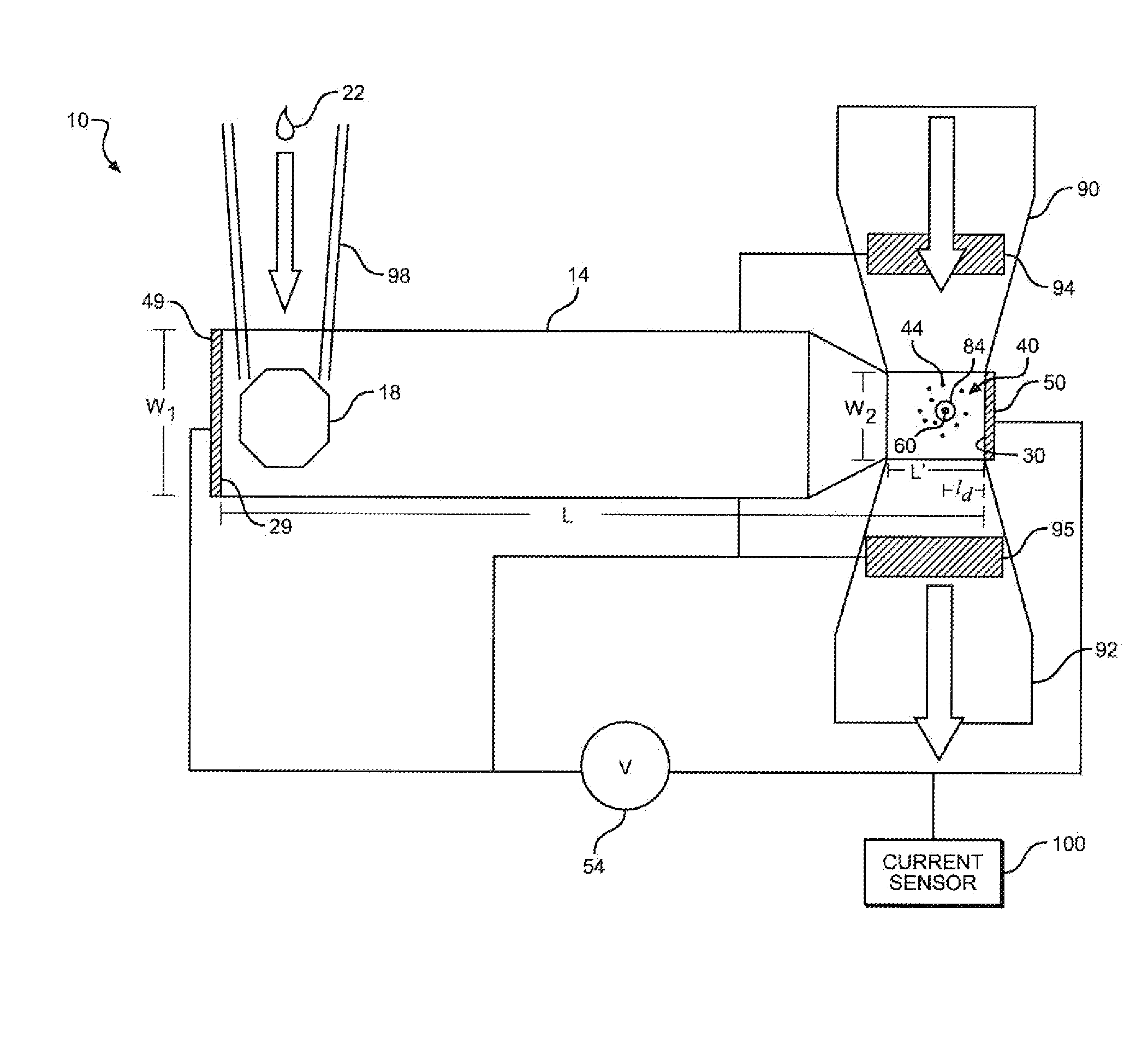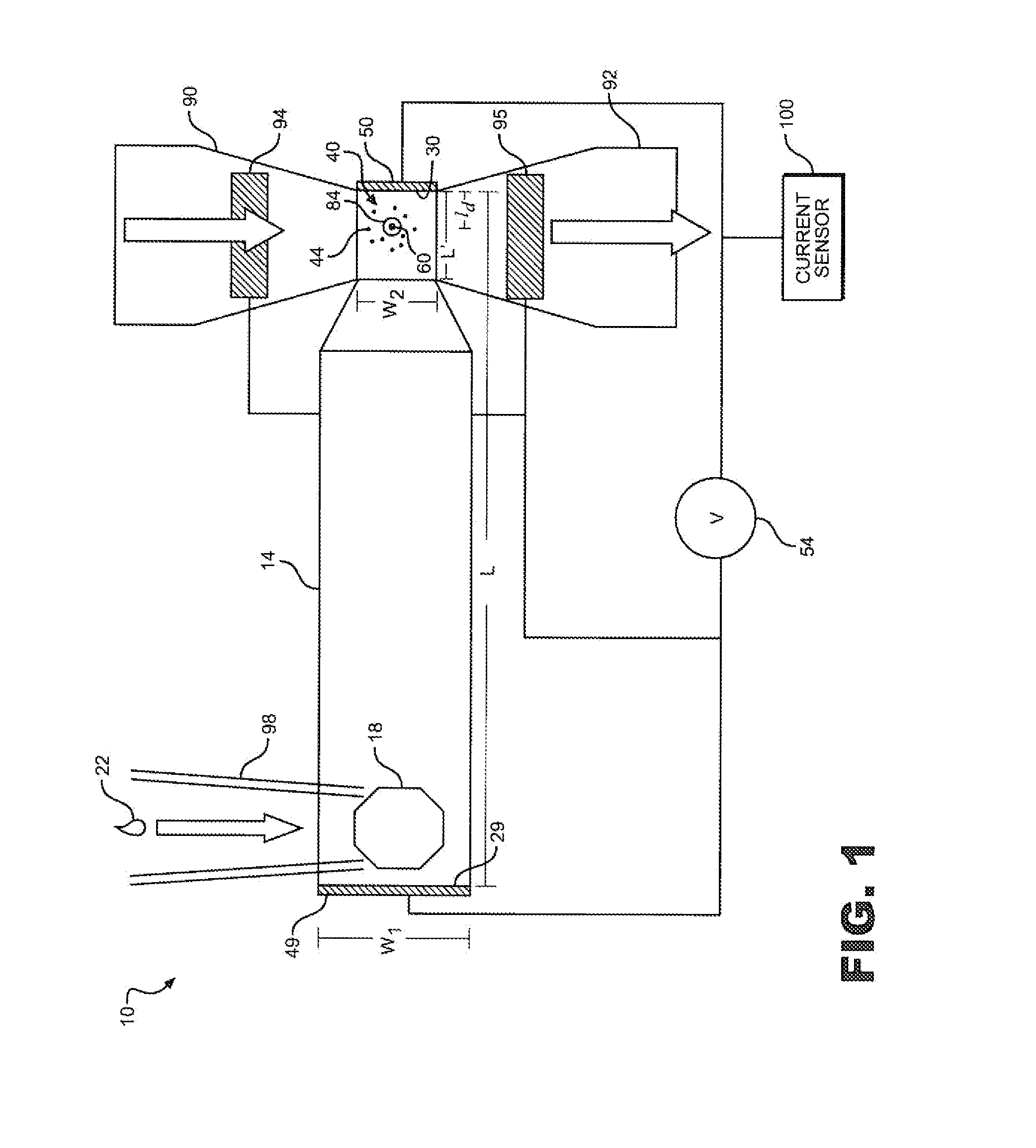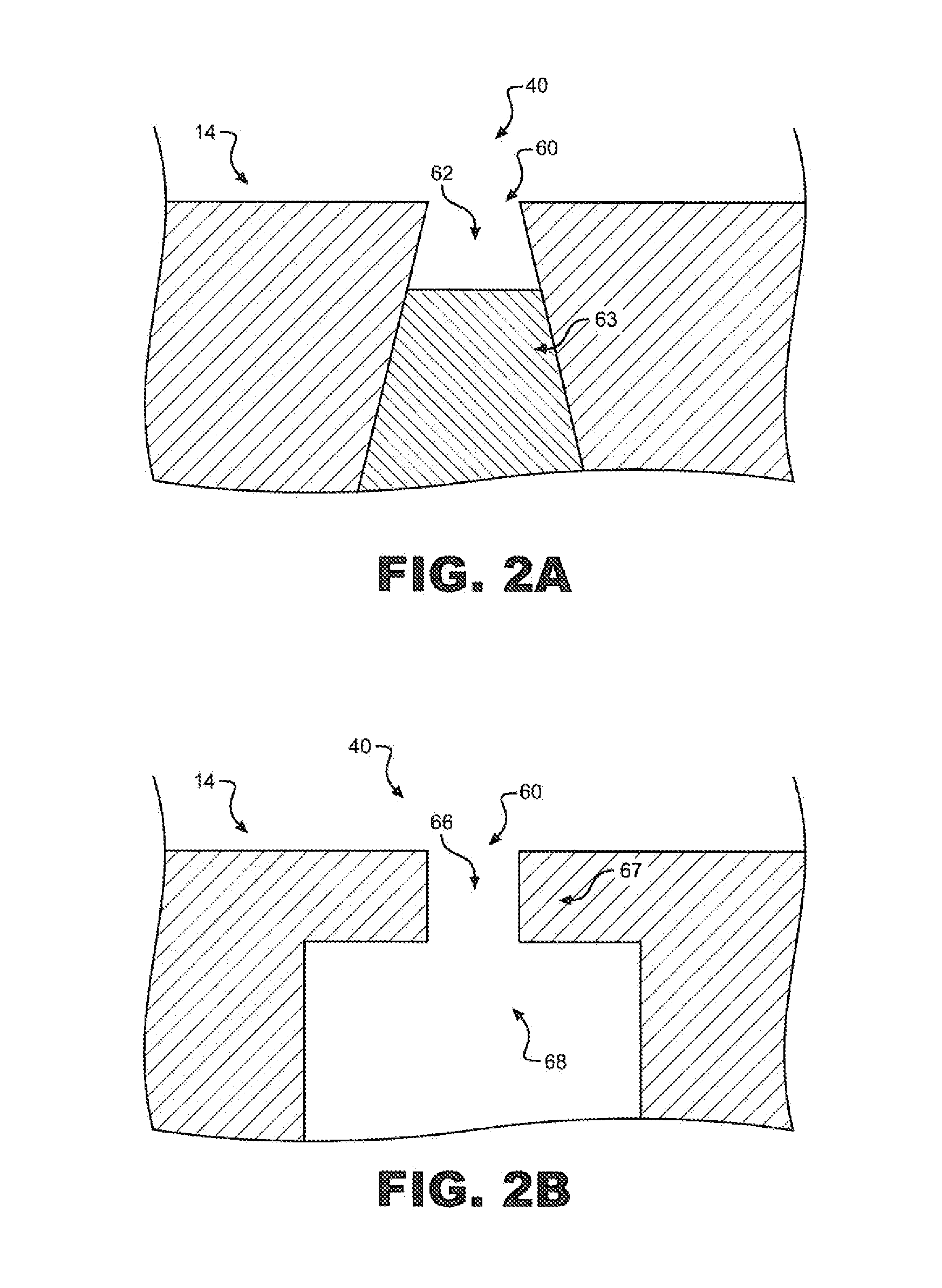System and Method for Increasing Polymer/Nanopore Interactions
a technology of nanopores and interactions, applied in the field of system and method for increasing nanopore interactions, can solve the problems of increasing work flow, increasing cost and complexity, and limited overall sequencing rate, and achieves the effects of increasing the number of target molecules, and increasing the number of molecules per unit tim
- Summary
- Abstract
- Description
- Claims
- Application Information
AI Technical Summary
Benefits of technology
Problems solved by technology
Method used
Image
Examples
Embodiment Construction
[0027]In general, the present invention is directed to a system and method for increasing the number of target molecules within the vicinity of a nanopore. The molecules can range from single ions to long polymers. The nanopore can be part of a measurement system that detects the molecules, or characterizes them in some way, such as determining their length, mass, composition or counting the number of molecules. In the preferred embodiment, the invention, is utilized for the sequencing of unamplified polymers, especially. DNA.
[0028]With reference to FIG. 1, an electrolytic sensing system 10 of the present invention includes a first fluid chamber or analyte chamber 14 including an input port 18. A sample of analyte indicated at 22 containing molecules to be sequenced or otherwise measured may be injected into analyte chamber 14 via input port 18. Analyte chamber 14 is depicted as approximately rectangular in cross section and in end to end geometry consistent with general fabrication...
PUM
| Property | Measurement | Unit |
|---|---|---|
| voltage | aaaaa | aaaaa |
| volume | aaaaa | aaaaa |
| volume | aaaaa | aaaaa |
Abstract
Description
Claims
Application Information
 Login to View More
Login to View More - R&D
- Intellectual Property
- Life Sciences
- Materials
- Tech Scout
- Unparalleled Data Quality
- Higher Quality Content
- 60% Fewer Hallucinations
Browse by: Latest US Patents, China's latest patents, Technical Efficacy Thesaurus, Application Domain, Technology Topic, Popular Technical Reports.
© 2025 PatSnap. All rights reserved.Legal|Privacy policy|Modern Slavery Act Transparency Statement|Sitemap|About US| Contact US: help@patsnap.com



